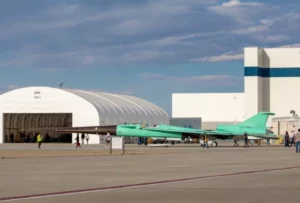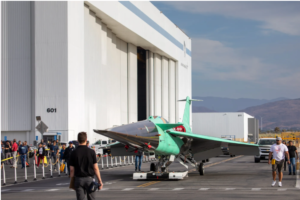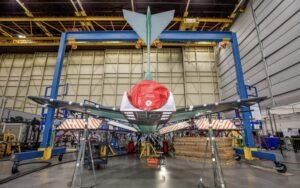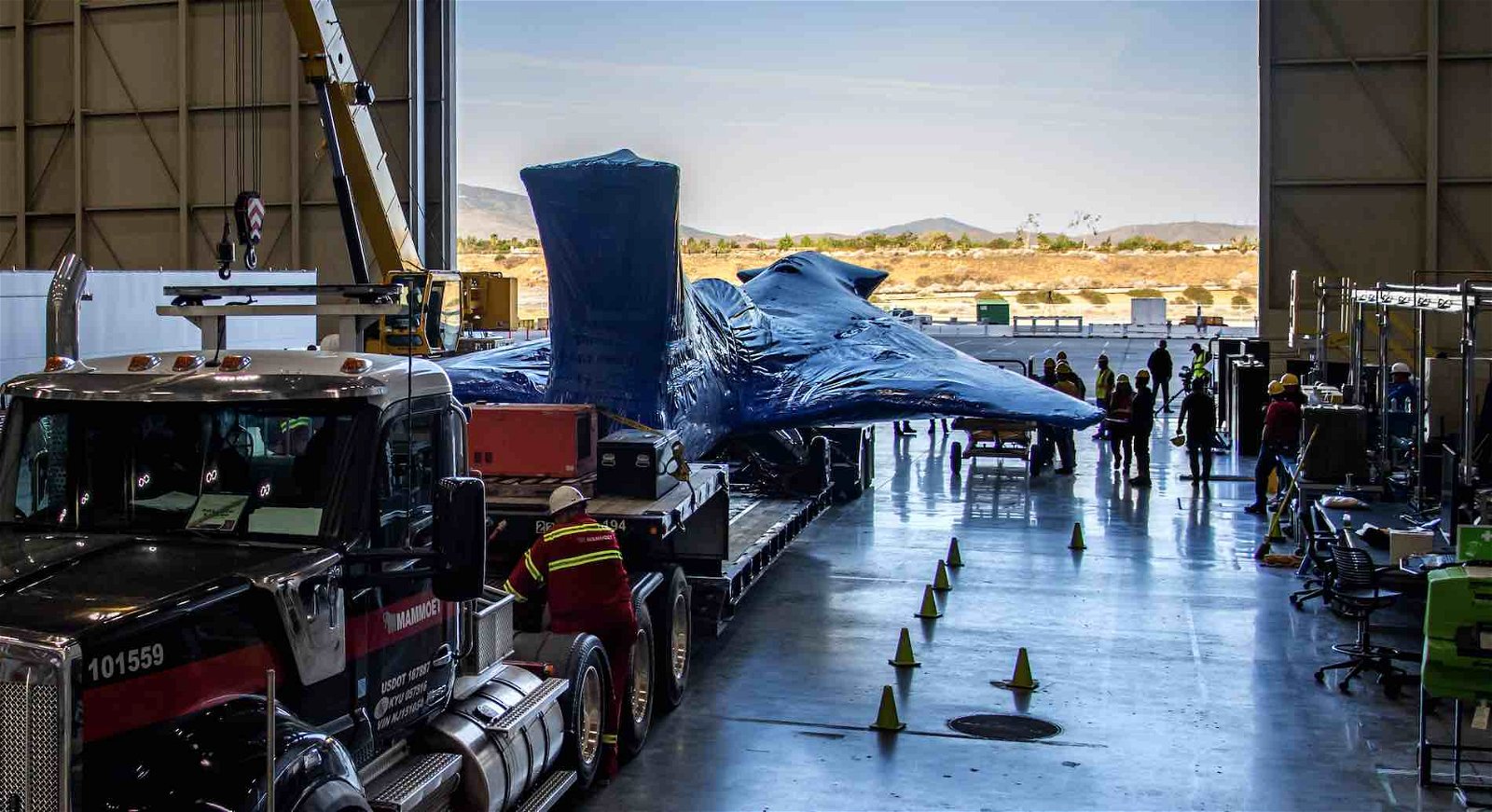NASA’s experimental X-59 aircraft, an ultra-fast aircraft designed for low-noise flight over land, is finally undergoing preparations for what will be its first flight in 2024.
Designed to travel faster than sound while reducing the intensity of the resulting sonic booms, something that has dramatically limited the use of supersonic military and commercial craft, the X-59 was built by the infamous Lockheed-Martin Skunk Works, an engineering think tank with a historically impressive track record of developing advanced aircraft for a myriad of applications.
A previous test flight of the X-59 had been expected to take place sometime earlier this year. However, continued testing and experimentation at the company’s Palmdale, California facility resulted in the delay. Now, it appears that the project is wrapping up those efforts, with an exact date in 2024 expected to be announced soon.


X-59 Experimental Aircraft Designed to Do the Seemingly Impossible.
When an aircraft’s speed approaches the speed of sound, compression waves generated in front of the plane get closer and closer together. When the aircraft “breaks” the sound barrier, these waves collapse violently, causing a loud explosion often called a sonic boom. When these sonic booms happen over the ocean, they are harmless. Still, sonic booms that happen over populated areas can result in rattled windows, broken glass, raging car alarms, and countless frayed nerves.
Hoping to reduce these booms from a loud explosion to the equivalent of a car door closing, NASA and Skunk Works started working on the X-59 experimental aircraft. The Debrief covered the years of testing and technology behind the effort in great detail earlier this year, resulting in a vehicle hoping to do the impossible in 2024.


Aircraft Made up of Parts from Existing Aircraft, Making Safety Paramount
Notably, the X-59 is not an entirely new airframe from top to bottom. Instead, it is cobbled together with systems and components from other existing aircraft. For example, the X-59 copped its landing gear from an F-16, while its life support systems were taken from an F-15.
According to the press release announcing the rescheduled 2024 launch, the team recently installed the “finishing touches” to the X-59’s tail structure, which “allowed them to finalize its electrical wiring and proceed to critical ground tests,” after which it will be moved from the assembly facility to the flight line to perform structural testing.
Once in the air, the vehicle is expected to fly over “several communities” to gather data on how people react to the significantly reduced sonic booms. Afterward, NASA says they will share their findings with domestic and international regulators “to potentially adjust rules that currently prohibit commercial supersonic flight over land.”


Like many vehicles designed for test purposes, the X-59 experimental aircraft has no proven safety record. According to the engineers involved, this means that safety remains their highest priority, so they have several final stages they expect to go through before actually taking flight.
Still, the goal of supersonic flight without huge sonic booms is compelling, and NASA says the team working on the aircraft is driven to meet the 2024 launch goal.
Christopher Plain is a Science Fiction and Fantasy novelist and Head Science Writer at The Debrief. Follow and connect with him on X, learn about his books at plainfiction.com, or email him directly at christopher@thedebrief.org.

